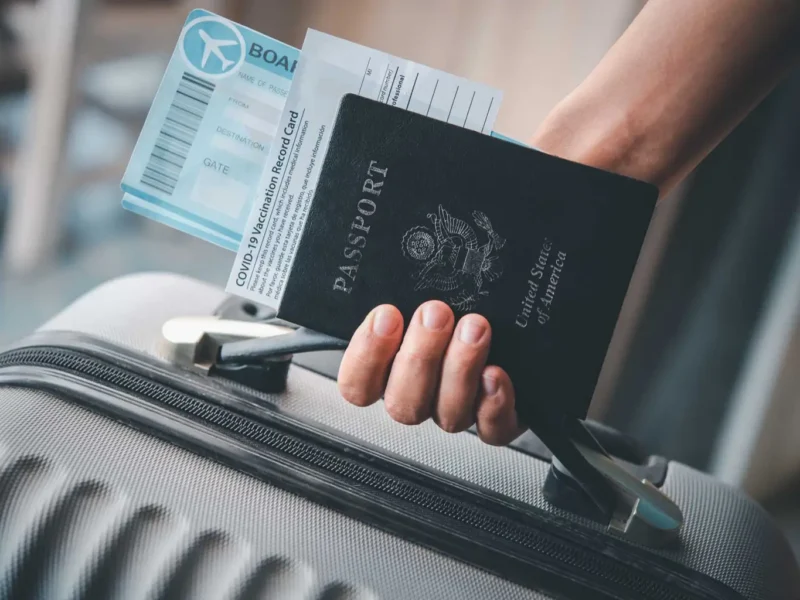Employers in the United States may engage foreign workers in specialized occupations under the H-1B visa, which is a non-immigrant visa. The goal of this program is to draw in highly qualified people, especially from industries like finance, engineering, healthcare, and information technology. The H-1B visa has emerged as a vital means for companies to bridge talent shortages in the United States, given the country’s increasing demand for skilled workers.
Eligibility Criteria for H-1B Visa Sponsorship
To qualify for an H-1B visa, both the employer and the foreign worker must meet certain requirements. The employer must prove that the job requires specialized knowledge and that the candidate possesses the necessary qualifications, typically a bachelor’s degree or higher in a relevant field. Additionally, the job offered must meet the prevailing wage set by the Department of Labor (DOL).
The Role of U.S. Employers in Sponsorship
Employers play a pivotal role in the H-1B sponsorship process. They must file a petition with the United States Citizenship and Immigration Services (USCIS) and demonstrate that hiring a foreign worker is essential for their business operations. The employer also bears the responsibility of paying the visa filing fees and ensuring compliance with all H-1B regulations.
The H-1B Visa Cap and Lottery System
Each fiscal year, the U.S. government sets a cap on the number of H-1B visas issued. Currently, the standard cap is 65,000 visas, with an additional 20,000 reserved for candidates holding a U.S. master’s degree or higher. Due to high demand, USCIS conducts a random lottery to select applicants, making the process highly competitive.
Understanding the Labor Condition Application (LCA)
Before submitting an H-1B petition, employers must file a Labor Condition Application (LCA) with the Department of Labor. The LCA ensures that hiring a foreign worker will not adversely affect U.S. workers by verifying that the employer will pay at least the prevailing wage and provide appropriate working conditions.
Required Documentation for H-1B Sponsorship
Applicants must submit various documents, including proof of educational qualifications, an employment offer letter, a detailed job description, and proof of compliance with wage and labor laws. Employers must also provide documentation proving their ability to pay the required wages.
H-1B Visa Processing Timeline
The H-1B sponsorship process follows a strict timeline. The petition submission window typically opens on April 1st, and USCIS conducts the lottery in the following weeks. If selected, processing can take several months, though premium processing is available for faster adjudication.
Premium Processing Option
For an additional fee, USCIS offers premium processing, which guarantees a decision within 15 calendar days. This service is beneficial for employers who need urgent hiring decisions and foreign workers who wish to expedite their employment start date.
Advantages of the H-1B Visa for Employers
Employers benefit from H-1B sponsorship by gaining access to a global talent pool. Hiring skilled foreign professionals helps businesses stay competitive, drive innovation, and address labor shortages in specialized fields.
Advantages of the H-1B Visa for Employees
For foreign workers, the H-1B visa provides the opportunity to work in the U.S., gain international experience, and earn competitive salaries. The visa also serves as a stepping stone for long-term career growth and potential permanent residency.
H-1B Visa Duration and Extensions
Initially, the H-1B visa is granted for three years, with an option to extend for another three years, making the maximum stay six years. Under certain circumstances, extensions beyond six years are possible, especially if the employee is on the path to obtaining a green card.
Portability of H-1B Visa
One of the significant benefits of the H-1B visa is its portability. Visa holders can switch employers without needing to leave the U.S., provided the new employer files a fresh H-1B petition. This flexibility offers job security and career growth opportunities.
H-1B Dependents: The H-4 Visa
Spouses and children (under 21) of H-1B holders can apply for H-4 visas to accompany them to the U.S. While H-4 visa holders were historically restricted from working, certain eligible spouses can apply for work authorization under specific conditions.
The Impact of H-1B on U.S. Workforce and Economy
The H-1B visa program has a profound impact on the U.S. economy by filling skill gaps, fostering innovation, and contributing to tax revenue. However, it also raises concerns about job displacement and wage suppression among U.S. workers.
Common Challenges in H-1B Sponsorship
Employers and employees face several challenges, including visa lottery uncertainty, processing delays, and strict compliance requirements. Navigating these hurdles requires careful planning and legal assistance.
H-1B Visa Denial Reasons
USCIS may deny an H-1B petition for reasons such as inadequate job specialization, failure to meet wage requirements, or insufficient documentation. Understanding these risks can help employers and applicants prepare stronger applications.
Alternatives to the H-1B Visa
For those who do not secure an H-1B visa, alternative options include the O-1 visa for individuals with extraordinary ability, the L-1 visa for intra-company transfers, and the TN visa for Canadian and Mexican professionals under NAFTA/USMCA.
Transitioning from H-1B to Green Card
Many H-1B holders seek permanent residency through employer-sponsored green cards. The process involves obtaining a PERM labor certification, filing an I-140 petition, and eventually applying for adjustment of status to become a lawful permanent resident.
Maintaining Compliance with H-1B Regulations
Employers must adhere to strict compliance requirements, including maintaining proper wage levels, offering fair working conditions, and avoiding unauthorized employment changes. Non-compliance can lead to penalties or visa revocations.
Recent Policy Changes and Future of the H-1B Program
The H-1B visa program undergoes frequent policy changes based on U.S. labor market needs and political priorities. Staying informed about updates, such as changes in the lottery system or wage requirements, is crucial for employers and applicants.
The Role of Immigration Attorneys in H-1B Sponsorship
Navigating the H-1B sponsorship process can be complex, requiring employers and applicants to comply with stringent regulations. Immigration attorneys play a crucial role in ensuring that petitions are filed correctly, addressing any legal hurdles, and minimizing the risk of denial. They also assist in responding to Requests for Evidence (RFEs) issued by USCIS, which often arise due to missing documents or insufficient proof of job specialization.
The Importance of Proper Job Classification
One of the key factors in a successful H-1B petition is ensuring that the job position is classified correctly. USCIS requires that the position falls under a “specialty occupation,” meaning it must require a bachelor’s degree or higher in a specific field. Misclassifying a role or failing to demonstrate the need for specialized knowledge can lead to petition denial.
Understanding the Prevailing Wage Requirement
Employers must pay H-1B workers at least the prevailing wage, as determined by the Department of Labor. This ensures that foreign workers are not paid below-market salaries, which could negatively impact the U.S. labor force. Employers must submit proof of wage compliance, and failure to meet this requirement can result in penalties or revocation of the H-1B petition.
How the H-1B Visa Benefits the U.S. Economy
The H-1B program contributes significantly to the U.S. economy by bringing in skilled professionals who help drive innovation, boost productivity, and enhance global competitiveness. Many tech companies rely on H-1B workers to fill critical roles in software development, artificial intelligence, and engineering, areas where domestic talent shortages persist.
Challenges Faced by H-1B Workers in the U.S.
Despite the advantages of the H-1B visa, foreign workers often face challenges such as job insecurity, travel restrictions, and uncertainty over visa renewals. Additionally, visa holders must adhere to strict employment conditions and cannot engage in unauthorized freelance or part-time work, limiting their financial flexibility.
Impact of H-1B Visa on Small Businesses
While large corporations like Google, Amazon, and Microsoft are major sponsors of H-1B workers, small businesses can also benefit from the program. However, smaller firms often struggle with the costs and administrative burden of sponsorship. Proper legal guidance and strategic workforce planning can help small businesses effectively use H-1B sponsorship to attract skilled talent.
The Role of STEM Fields in H-1B Sponsorship
A significant portion of H-1B visa holders work in Science, Technology, Engineering, and Mathematics (STEM) fields. The U.S. faces a continuous demand for professionals in these industries, and H-1B sponsorship allows employers to bridge the talent gap by hiring highly qualified individuals from around the world.
The H-1B Visa and Higher Education Institutions
Universities and research institutions also sponsor H-1B workers, particularly for teaching and research positions. Unlike private employers, these institutions are often exempt from the annual H-1B cap, allowing them to hire foreign talent throughout the year without participating in the visa lottery.
Comparing H-1B with Other Work Visas
The H-1B visa is one of several employment-based visa options. Compared to the L-1 visa (for intracompany transfers) or the O-1 visa (for individuals with extraordinary ability), the H-1B offers broader eligibility but also faces strict numerical limits and competition through the lottery system.
How H-1B Workers Can Change Employers
H-1B visa holders are allowed to change employers under the portability provisions of the visa. The new employer must file an H-1B transfer petition, but the worker can start employment as soon as USCIS receives the new petition, without waiting for final approval. This flexibility benefits employees seeking better job opportunities.
The Role of H-1B in U.S. Tech Industry
The technology sector is the largest beneficiary of the H-1B program. Companies like Apple, Facebook, and Intel heavily rely on skilled foreign workers to fill roles in software engineering, cybersecurity, and data science. The visa helps these firms maintain a competitive edge in the global market.
H-1B Visa Extensions Beyond Six Years
Under normal circumstances, the H-1B visa is capped at six years. However, certain exceptions allow extensions beyond this period, particularly if the worker has started the green card process. Workers with pending labor certifications or I-140 approvals can continue extending their H-1B status until a green card is available.
Restrictions on Travel for H-1B Visa Holders
While H-1B visa holders can travel internationally, they must maintain valid visa stamps in their passports for reentry. Additionally, if an H-1B worker is in the process of changing employers, travel outside the U.S. could complicate their reentry and visa status.
The Public Opinion on H-1B Visa Program
The H-1B visa has been a topic of debate in the U.S., with supporters arguing that it brings necessary talent and innovation, while critics claim it displaces American workers. Legislative changes have been proposed to address concerns over wage requirements, employer abuse, and program transparency.
Common Myths About the H-1B Visa
There are several misconceptions about the H-1B visa, such as the belief that it only benefits large tech firms or that foreign workers take jobs away from Americans. In reality, the visa program follows strict regulatory guidelines to prevent exploitation and ensure economic benefits.
How H-1B Sponsorship Supports U.S. Innovation
Many groundbreaking innovations in the U.S. have been driven by H-1B visa holders, particularly in fields like artificial intelligence, biotechnology, and software development. The program enables companies to attract top global talent, fostering creativity and technological advancements.
H-1B Workers and Taxes in the U.S.
H-1B visa holders are required to pay federal, state, and local taxes, just like U.S. citizens. They contribute to Social Security and Medicare, even though they may not receive the same long-term benefits unless they obtain permanent residency.
The Future of H-1B Sponsorship
The H-1B program is likely to undergo further changes as immigration policies evolve. Employers and foreign workers should stay updated on potential legislative reforms that may impact visa quotas, wage requirements, and eligibility criteria.
The Role of Startups in H-1B Sponsorship
While large corporations are the primary sponsors of H-1B workers, startups can also benefit from hiring foreign talent. However, startups face additional scrutiny during the petition process, as they must prove financial stability and the ability to pay the prevailing wage. Entrepreneurs must strategically plan their H-1B petitions, often seeking legal guidance to navigate the complex requirements.
H-1B Sponsorship for Non-Tech Industries
Although the H-1B visa is widely associated with the tech industry, other sectors also rely on it. Healthcare, finance, education, and manufacturing frequently sponsor foreign professionals, including doctors, accountants, university professors, and engineers. The demand for skilled workers in these fields continues to drive H-1B petitions.
The Role of Employers in Ensuring Compliance
Employers sponsoring H-1B workers must maintain compliance with federal regulations. This includes maintaining accurate records, reporting any changes in employment terms, and ensuring the worker is paid the prevailing wage. Non-compliance can lead to penalties, including fines or being barred from future sponsorships.
The Impact of H-1B Visa on Green Card Applications
Many H-1B workers use this visa as a stepping stone to permanent residency in the U.S. Employers can sponsor their workers for a green card through the EB-2 or EB-3 employment-based visa categories. However, depending on the worker’s nationality, the green card process can take several years due to annual caps and country-specific backlogs.
The Role of Employer-Employee Relationship in H-1B Approval
For an H-1B petition to be approved, USCIS examines the employer-employee relationship. Employers must demonstrate that they have control over the employee’s work, including supervision, salary determination, and job responsibilities. Third-party placements, such as IT consulting firms, require additional documentation to prove legitimate employment relationships.
Can an H-1B Worker Start Their Own Business?
H-1B visa holders cannot typically start their own businesses in the U.S. unless they follow specific legal guidelines. They must maintain their primary employment with the sponsoring employer, and any new business must not conflict with their visa restrictions. Some workers transition to alternative visa categories, such as the EB-5 investor visa, if they seek entrepreneurial opportunities.
H-1B Visa Fraud and Misuse
There have been cases where employers misuse the H-1B program by underpaying workers or misrepresenting job requirements. USCIS and the Department of Labor have implemented strict auditing and site visit policies to prevent fraud. Employees should be aware of their rights and report any violations to avoid exploitation.
The Effect of the H-1B Program on Wage Growth
Critics of the H-1B visa argue that it suppresses wage growth in certain industries by increasing labor supply. However, studies indicate that H-1B workers contribute to economic growth by boosting productivity and innovation, leading to long-term wage increases in high-demand fields.
H-1B and the Global Talent Competition
Countries like Canada, the UK, and Australia offer competitive work visa programs to attract skilled workers. The U.S. must continuously adapt its H-1B policies to remain an attractive destination for top global talent, particularly in science and technology fields.
The Role of H-1B Workers in Research and Development
Many H-1B visa holders work in research and development (R&D), contributing to groundbreaking advancements in medicine, engineering, and technology. Universities, research institutions, and corporate R&D centers benefit significantly from hiring international researchers through H-1B sponsorship.
The Psychological Impact of H-1B Uncertainty on Workers
The uncertainty of the H-1B process, including the visa lottery, renewal difficulties, and green card backlogs, can cause significant stress for workers and their families. Many visa holders experience anxiety about their future in the U.S., prompting calls for immigration reform to improve job stability.
The Role of Government Policies in Shaping H-1B Visa Trends
The number of H-1B visas issued, wage requirements, and eligibility rules often change with new administrations. Businesses and foreign workers must stay updated on policy changes, as stricter regulations can impact hiring decisions and career plans.
Workplace Rights for H-1B Visa Holders
H-1B workers are entitled to workplace protections, including fair wages, non-discriminatory treatment, and safe working conditions. Employers cannot retaliate against H-1B workers for reporting violations. Understanding these rights is crucial for foreign employees to avoid workplace exploitation.
The Role of AI and Automation in Reducing H-1B Demand
With advancements in artificial intelligence and automation, some routine tasks previously performed by H-1B workers are now being automated. While this reduces demand in some industries, it also creates new opportunities for highly skilled workers specializing in AI, machine learning, and cybersecurity.
Can H-1B Workers Apply for Other Visas While in the U.S.?
H-1B visa holders can apply for other visa categories, such as an employment-based green card, if they qualify. They may also switch to family-sponsored visas if they marry a U.S. citizen or permanent resident. Careful planning is essential to ensure a smooth transition between visa statuses.
The Role of STEM OPT in the H-1B Process
Many H-1B applicants first come to the U.S. on an F-1 student visa and participate in Optional Practical Training (OPT) before applying for H-1B sponsorship. The STEM OPT extension allows graduates in science and technology fields to work for up to three years, giving them more chances to secure an H-1B visa.
How H-1B Affects U.S. Innovation Leadership
The H-1B visa program plays a vital role in maintaining the U.S.’s position as a global leader in technology and innovation. Many successful startups and multinational companies have been founded by former H-1B holders, highlighting the program’s contribution to economic growth.
The Impact of Remote Work on H-1B Sponsorship
With the rise of remote work, many employers are re-evaluating their need for on-site H-1B workers. While remote work is possible for H-1B employees, employers must update the Labor Condition Application (LCA) to reflect any changes in work location.
How H-1B Visa Holders Can Change Their Immigration Status
H-1B workers may transition to other visa statuses, such as an L-1 intracompany transfer visa or an EB-2/EB-3 employment-based green card. Some also explore options like the O-1 visa if they qualify as individuals with extraordinary ability.
Global Mobility for H-1B Visa Holders
Some multinational companies transfer their H-1B employees to international offices if their visa status in the U.S. is uncertain. This allows workers to continue employment abroad while waiting for visa or green card approvals.
The Role of U.S. Universities in H-1B Sponsorship
Universities play a significant role in H-1B sponsorship, particularly for professors and researchers. Unlike private employers, universities and research institutions are not subject to the H-1B cap, allowing them to hire foreign professionals year-round.
Calls for H-1B Visa Reform
Many policymakers and business leaders advocate for reforms to improve the H-1B process, such as increasing visa quotas, streamlining green card pathways, and reducing employer restrictions. Proposed changes aim to make the system more efficient and beneficial for both employers and foreign workers.
Conclusion
A key component of the U.S. immigration system, the H-1B visa sponsorship program gives qualified foreign workers the opportunity to advance their careers in the United States while also giving companies access to talent from around the world. H-1B workers stimulate innovation, close important skill gaps, and boost the economy in a variety of industries, including technology, healthcare, finance, and academics.
Notwithstanding its benefits, the program has drawbacks. Securing an H-1B visa is extremely competitive due to the annual cap and lottery system, and firms bear a heavy burden of compliance requirements. Visa holders also have to deal with the long green card application process, travel restrictions, and job changes. These elements emphasize how the system must be continuously improved to better benefit employers and foreign workers.
Looking ahead, the future of the H-1B visa will be shaped by evolving economic needs, technological advancements, and immigration policy reforms. As global competition for top talent intensifies, the U.S. must ensure that its immigration policies remain flexible and efficient to attract and retain skilled professionals.
For employers, understanding the intricacies of H-1B sponsorship can help them make informed hiring decisions, maintain compliance, and leverage the program to drive business success. For foreign workers, navigating the H-1B process with careful planning, legal support, and career strategy can open doors to long-term opportunities, including permanent residency and career growth.
Ultimately, the H-1B visa represents more than just a work authorization—it is a bridge between talent and opportunity, enabling individuals to achieve their professional aspirations while contributing to the continued success and innovation of the U.S. economy.






